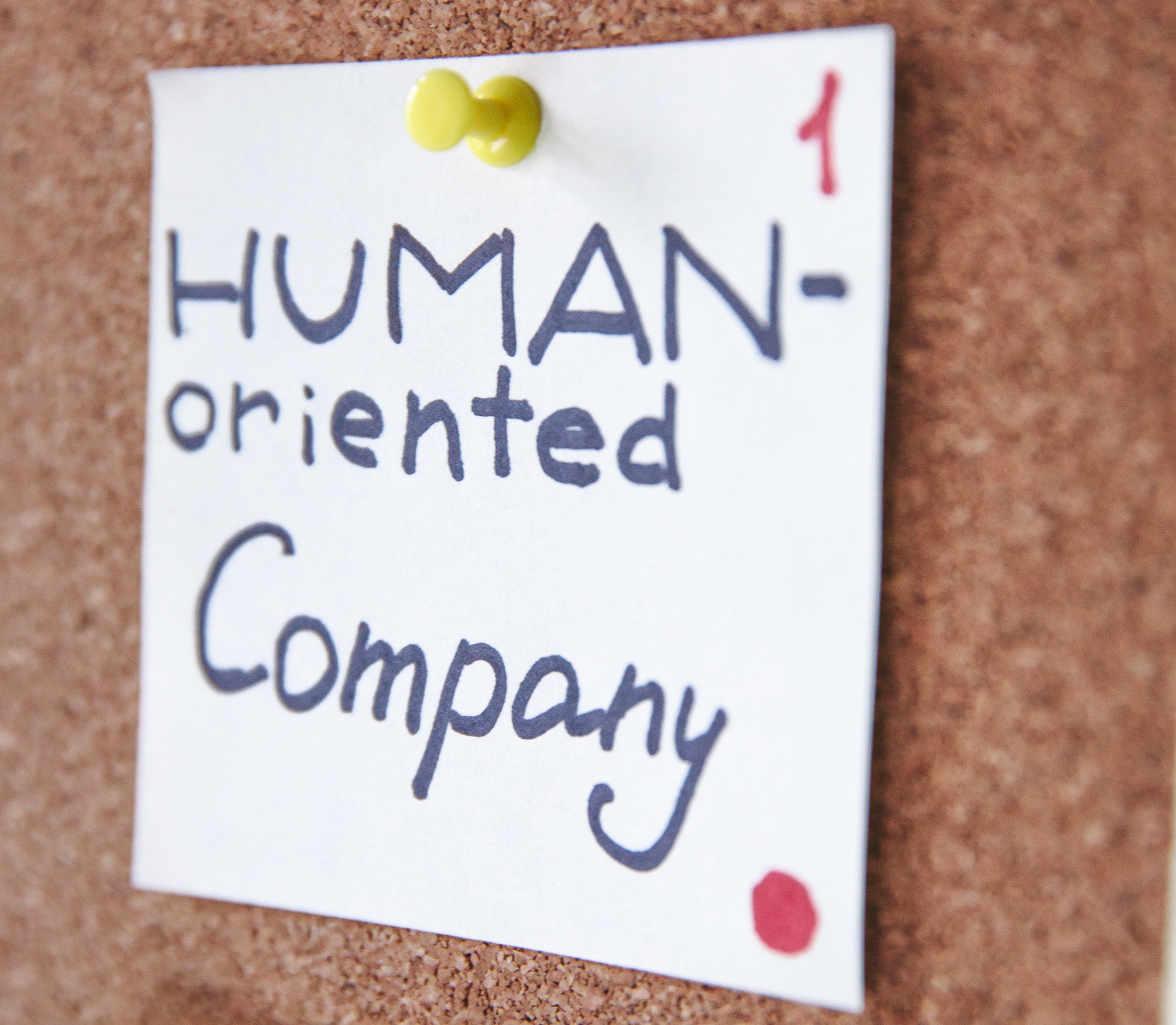Build an Amazing People-Magnet Machine: Know and Invest in Your People
This is the last in a series of three blogs about what it takes to build what my Growth Whisperers podcast partner Brad Giles and I call an amazing people-magnet machine, and to make sure you have a constant flow of amazing people who want to work for you.
If you missed parts 1 and 2, here are the links:
- Part 1: Establishing Your Brand as an Employer
- Part 2: Proactive Recruitment
Now on to part 3: I’ve said before that the secret sauce of growing a successful company is to have strong people on your team. Hiring the right people is just the beginning. If you want to strengthen and retain, you have to invest in your people. You need to know them and you have to invest in their growth and development.
Know your people
Know what they want, where they are, their workload, their challenges in life, their aspirations.
If you know your people well, it's easier to figure out what you can do to help them to grow.
(I picked this up from Mark Cuban when we talked to him, pregame, years ago.)
Understand where they want to be in three-to-five years and work with them to get there.
As a manager, even if you aren’t sure if someone has the ability to get there, it’s in everyone’s best interests to give them appropriate opportunities to stretch and try, in real time.
This is the difference between buying something you see in a window and going in to try it on to see if it fits properly.
For example, two executives said they wanted to eventually be a CEO, so were given opportunities to prove - to themselves and the company - their appetite for, and ability to do the job. After a year, one of the candidates found they loved the work and the other didn’t.
As a manager, it’s your responsibility to provide coaching and training and lots of tangible feedback about what’s working and not, along the way – and in postmortems from project teams. The person should also report on their own progress and reflect on how they can do better next time.
Invest in the growth of your existing good and great people
Your best people are like your flagship product or store. You’re very proud of them, they do great work and are examples to others. But when we get busy and don’t put enough energy into these great assets, we miss the opportunity to keep them engaged and happy, as they develop and grow – and for them to train and develop the people underneath them.
Provide training or coaching. The best investment you can make in people is to accelerate their career progression with additional knowledge or capability. This approach is also a great example of what's possible for others in your company.
- Many great universities offer three-day programs or training courses.
- Involve them in your projects to contribute something beyond their day job.
- Give them a challenging project to do on their own. Some people learn and thrive when they are thrown into the deep end of the pool.
- Give them new leadership responsibilities. If someone wants to be a manager, ask them to mentor others to start working on their management skills.
- Invest in a coach to help accelerate their growth. And, if you do, make sure you use the Coaching Triad (chapter 14, Your Oxygen Mask First) so that you stay in sync with them and their coach about what’s working, what’s not and what they should focus on.
In summary of this series, to turn up the power of your amazing people magnet machine:
- Have a great people strategy
- Reinforce what makes your company an amazing place to work with evidence back it up
- Ask your people to proactively recruit candidates
- Continuously develop people, and get them engaged to increase their capabilities
- Let them shine as examples of what's possible at your company.
The Challenge
- What do you need to do to get to know your people better?
- What can you do to invest in their growth?
- Who are you going to get to work on this, with you, to make it happen?
For more on this topic, check out Episode 37 of The Growth Whisperers podcast.
Build an Amazing People Magnet Machine: Proactive Recruitment
This is the second in a series of three blogs explaining the principles of building what my Growth Whisperers podcast partner Brad Giles and I call an amazing people-magnet machine - to make sure you attract a flow of awesome people to sustain your growth.
The first was about establishing your brand as an employer. Here is the second principle to help you to attract a flow of awesome people.
Proactive Recruitment
Most companies have a low success rate hiring and promoting high performers because they don't have enough great people from whom to choose. They scramble to find people and then make choices out of scarcity or desperation. Better to have an abundance of excellent contacts.
I've met a number of leaders who are excellent at proactive recruitment, and it is a game changer. Here are a few strategies:
Keep a prospect list.
This is no different from the prospect list on which your sales team constantly works.
This isn’t an HR project. It’s for senior leaders and managers to work on and is as simple as reaching out to have a chat. It might take one, three or five years before a prospect is ready to make a move because high performers are almost always employed, and well taken care of by their companies. When they decide to change, you want to already have a relationship and be top of mind.
In an interview we did with Topgrading™ CEO Chris Marsau, he shared research that, in a pool of suitable candidates, 80% are willing to have a conversation. (More about this later when we talk about using recruiters or headhunters.)
One CEO has a list of the country’s top performing people, in his industry, and constantly has coffee dates to chat and build relationships. He’s priming the pump for the time when they are open to something new and interesting.
Ask your best people to recruit from their networks.
This strategy is often missed because people are either too busy or think recruitment is HR’s job. Not the case. HR can support and drive the process but, generally, managers are a big factor in successful recruitment.
It can be as simple as reminding people to reach out to their networks. One construction company asks employees to stop work for a few minutes to forward a pre-written text to a bunch of their contacts to try to flush out candidates. Another leadership team uses a half hour of strategic planning meetings to ping people on LinkedIn, to ask if they know of anyone who may be interested in a certain role.
Use a recruiter or headhunter.
The best will either have a database of people who could be excellent for a role or will proactively contact people. You don't need to get a recruiter to run job ads for you because that's not usually the best strategy and you could do that yourself. Get them to put their energy into reaching out to people who you believe are in companies and roles suitable, to see if they may be interested. Make sure you're specific about the companies and roles or titles in which you are most interested.
The Challenge
- What do you need to do to be excellent at proactive recruitment?
- Who are you going to work with to get 10 to 20% better?
For more on this topic, check out Episode 37 of The Growth Whisperers podcast.
Build an Amazing People-Magnet Machine: Establish Your Brand as an Employer
The dream of many successful leaders and entrepreneurs is to have a strategy and flywheel so powerful that they experience incredible growth. When you’re doing great work delivering what your customers need and you’ve figured out how to scale up, then the biggest challenge is to get enough of the right people on the bus, and to develop them so that growth is sustained.
The key is to have a constant flow of amazing people who want to come work with you - like the tech giants who open a new office in town, and attract lineups of people, looking for work. Because those companies are so well known, people want to be part of something great.
In this first of a series of three blogs, we’ll talk about how to build what my Growth Whisperers podcast partner Brad Giles and I call an amazing people-magnet machine.
Here is the first principle to help you to attract a flow of awesome people.
Establish an Employer Brand
Lots of companies put all their energy and marketing efforts into getting or keeping customers, but not nearly enough into getting and keeping employees.
- If you look at the careers section of your company’s website, is it as powerful, engaging and well thought-out as the pages designed for prospective clients?
- Have you found a way to show and articulate how appealing you are to someone who's considering coming to work for you?
Here are some things to consider when building your employer brand:
- Get on a list of great places to work. Many high performers take this into account because it's like a certification of caring or quality. If you don’t get on, the time and energy you put into trying is likely going to improve some things in your company
- Show your engagement survey results. If you are a great company, the feedback you'll get from your team would be excellent.
We conduct quarterly mini-pulse surveys to stay aware of everything needing to get done heading into strategy meetings. The end result is a word cloud relating to the culture. This is an excellent branding tool to describe what the company is really like.
- Proactively share great things about your culture and what you're up to now. Perhaps an interview in which your CEO talks about your culture. In addition, compliments from customers, suppliers or your employees, posted on social media.
- Articulate your employee promise. This is similar to the strategy work we do on the customer side to define a unique value proposition. This exercise defines what makes people want to come and to stay working with you. What makes you different and more powerful than other companies? This exercise helps to align many of your HR decisions. It also provides clarity on how you can continue to improve your employees’ experience.
The Challenge
- Make your employer value proposition crystal clear. Why is working at your company such a great opportunity for the right person?
- Who are you going to work with, to make it happen?
For more on this topic, check out Episode 37 of The Growth Whisperers podcast.
Is Mental and Emotional Health a Priority in Your Boardroom?
Until recently, mental and emotional health was just not something high performers talked about – and certainly not in the boardroom.
Let’s face it, in the business environment, achievement and profit are the drivers of effort and conversation, and rightly so. But the demands of delivering consistently high performance exact a high price, and it’s time to put mental health on the agenda.
One good thing about the COVID pandemic? People are now talking more about mental health and recognizing the need for strategies to help us deal with the demands of the world - and the impact on our Work, Self and Life.
A year ago, attendees of the World Economic Forum in Switzerland were warned by mental health experts of a five-fold increase in referrals to psychiatric clinics. Bipolar, they said, is now known as “CEO disease” because addiction, depression and anxiety are linked to the tenacity, resilience and risk-taking qualities that make an exceptional senior executive.
They called it a mental health epidemic.
And then along came COVID.
A Mental and Emotional Health Strategy
In this recent Forbes article about research done after the first lockdown, 64% of people reported common signs of depression and 57% suffered from anxiety. It’s clear that we need a mental health strategies - not just for yourself, but for your business, as well.
Research numbers predict a crisis in absenteeism, productivity and retention and the ability to attract and recruit the right people. Sincere and strong mental health policies can minimize business disruptions, help you keep valued employees and make you more attractive to people who are a fit with your culture.
Problem or Opportunity?
This isn’t necessarily a problem. It’s a massive opportunity to recognize that how people work is undergoing a huge transformation – and to create a culture with core values and policies that demonstrate the importance of a well and resilient workforce.
Companies around the world are reaping the benefits as they look at a range of options to support individual needs and preferences. Like the proposed flexible 3-2-2 work week structure by academics at the University of Zurich. This work week consists of 3 days at the office, 2 days working from home, and 2 days for family and friends.
And it’s paying off, for people and business.
- Not commuting, in the US alone, has saved people about 89 million hours every week since the pandemic began.
- Unilever in New Zealand is testing a four-day work week, with no pay reduction.
- Microsoft‘s four-day work week in Japan saw productivity and employee satisfaction and wellbeing increase more than 40%.
Here are some things you can do:
- Educate yourself and your teams to help de-stigmatize mental health issues
- Learn how to recognize and deal appropriately with someone who needs support
- Model healthy behaviours from the top down
- Actively engage in conversations with your employees
- Offer mental health sick leave and free counselling
- Review workloads as part of quarterly talent reviews and 360 feedback sessions
- Work on preventative as well as remediation programs
- Where possible, offer flexible hours and work-from-home options (post-pandemic) to allow people to deal with family or personal obligations.
- Focus on outcomes and results versus how long someone spends at their desk.
Whatever works for your company, better mental health means a healthier bottom line. Time to put it on the agenda.
The Challenge
- What do you need to do to create a responsive mental health strategy in your company?
- Review (in Your Oxygen Mask First) Chapter 3 Double your Resilience and Chapter 7 Manage Your Mental Health with your team.
Please let us know if you need help with:
- A keynote presentation on the principles of Your Oxygen Mask First about how to take care of yourself and your team, in challenging times
- A working session for your team. These are full of practical tools and information on how to stay resilient and learn more about mental wellness.
- A Mental Wellness strategy.
Building a Strong, Engaging and Resilient Culture to Win in 2021
I’ve shared before how, in the early days of my career, I thought culture was warm, fuzzy HR fluff - more entertainment and social club than a strategic driver. Probably because I was so obsessed with achievement and not overly concerned about environment. That perspective has definitely changed over the years.
Building a strong culture can align your team, especially when that culture is crystal clear and reinforced on a regular basis. Without clear guidelines for how to behave in your company, your culture will become the average of what your more influential people think or believe. And, as your company grows, you’ll hire people who are off culture, especially senior leaders.
Here are four things to do in 2021 to ensure your culture gets better and stronger:
[1] Avoid wallpaper syndrome
This is when your culture disappears with neglect. Even companies with well-defined core values and purpose need to breathe life into the culture - again and again and again.
Research about enduring, great companies - and our own experience with companies around the world - shows it’s not so much what the culture is - it’s about having a common culture. Similar to an operating system, it allows people to row in the same direction, with less friction, and makes it easier to enjoy their work.
Figure out four, six, eight, ten or twelve things you can do to continually breathe life into your culture in 2021 – here are some ideas:
- An annual kick-off event talking about purpose and core values.
- Core value awards.
- Ask everyone in the virtual room to note one core value they consistently live the best – and one they need to work on.
- Create a physical piece that reinforces core values: a coin, a t-shirt, a card.
- Hold a contest for the best video that articulates your core values, for others in the company and new hires.
- Make a list of what the core values aren’t.
- Ask for and share customer feedback about how they experience your core values.
- Mine stories from the company’s history about when people did or did not live the core values.
- Review your purpose and core values in the first minutes of every meeting and in every CEO address.
- Ask all managers to write notes of appreciation acknowledging their staff for core values lived well that year.
And I’m sure your awesome team can up with 347 other ideas
[2] Remove the plaque
Think about the analogy of good oral hygiene: we brush our teeth and floss, on a regular basis, to keep teeth and gums healthy. But you still have to go to the dentist every six months for a check-up and to scale off additional plaque that builds up - no matter how often you’ve brushed.
Consistent behaviours become culture, and processes, strategies, beliefs and people get in that need to be checked and removed. Like having too many meetings or always starting or finishing late. You have to pay attention and consistently clean up what doesn’t work, in all levels of the company - from senior leadership to the front line.
Everyone needs to be given consistent, powerful reminders and opportunities to reflect on what are unacceptable and acceptable behaviours.
The critical step is to decide to remove unwanted things – activities, processes or behaviours that need to change, stop or get back to what was initially intended.
Hiring or promoting someone who doesn't get your culture is equivalent to saying your culture doesn't matter.
[3] Pull the weeds
In an amazing garden, weeds still pop up. This can be toxic to the aesthetic and a detriment to what you are trying to grow. Removing those weeds - people who are not a fit with your culture – can be a tough decision.
Most of our clients use a quarterly talent review, starting with the executive team to look at performance and values of the team and their direct reports.
The process reveals an action item to address those who are not a fit with the culture:
- Toxic As (high performers who aren’t a cultural fit)
- C-Players (low performers who aren’t a cultural fit)
Ideally, both can be given a chance to get back on culture and support to help them thrive. If, after a quarter or two, they don’t, a decision may be needed to give them an opportunity to go a company that more suits their natural way of thinking and behaving.
The key is to make sure you always look for what's best for the company and the culture overall - and the individual. People who don’t fit simply aren’t happy and, although change can be hard, it's better to have an adult conversation to encourage them to look for another opportunity, and to help them to move on with dignity.
One of the greatest ways to lose credibility as a leader is to hire, keep or promote someone who isn't a good culture fit.
[4] Get regular 360 feedback to executives and key leaders
Sometimes, CEOs or senior leaders have blind spots and miss where their behaviors are off culture. Some people can work exceptionally well with us but are a nightmare for others. These may not be bad people - they may just have bad habits.
360 feedback makes it crystal clear who is really on or off culture and why. It also provides the data we need to improve. Our 360s ask 10 short questions related to living up to core values and leadership effectiveness. It's a great way to make sure that everyone knows where they stand. In addition, it helps create a plan for what needs to be done to create a more effective team.
In summary, keeping a vibrant culture is no different to keeping your teeth healthy or your garden beautiful. It's work that requires ongoing thought, energy and maintenance. Otherwise, deterioration will set in, requiring seriously expensive or painful rehabilitation. You want to respect and honour what you have and continue to enhance it.
The Challenge
- Develop a list of 6 to 12 things that you're going to do to enhance your culture next year.
- Decide you you are going to work with to help you with this.
Let us know if we can assist you if…
- Your values and other mechanisms of your culture aren't crystal clear
- Your culture (purpose and core values), system for 360s or quarterly talent reviews aren't as good as they can be.
Check out this episode of The Growth Whisperers podcast for more on this topic.
Study Greatness
Boxing legend Mike Tyson often comes across as someone who has had too many blows to the head. But in an interview on Joe Rogan’s podcast, I learned about that he’s been studying some of the world’s greatest conquerors, since he was 15 years old – not just about how they thought, but how they believed that they actually deserved to conquer lands, dominate people and take what other’s valued. He wanted to not just understand their mindset but to embody it, and to live, breathe and act accordingly.
That’s what he took into the ring: the permission he gives himself to destroy, and potentially kill, his opponent.
Known as the “baddest man on the planet”, Tyson is one of the greatest heavyweight boxers of all time, claiming his first belt at just 20 years of age – the record for the youngest boxer to win a heavyweight title. He won his first 19 pro fights by knockout, 12 of them in the first round.
It was fascinating. When Tyson fights, he’s conquering the soul and spirit of another human being, feeling that he has not only the right, but the obligation to do it.
His commitment to studying these conquerors reminds me of a conversation my then 13-year old son and another CEO’s son had with Jim Collins, after a large public event with a couple of thousand people, in London, England. During a small, private session with a group of CEOs, they asked Jim what advice he would give to young, aspiring leaders. His response?
Read 100 biographies and study greatness.
That’s essentially what Mike Tyson did. He studied the lives of great conquerors like Alexander the Great because he wanted to conquer, too.
So, when you think about your biggest goals – think terms of a BHAG (Jim Collins’ Big Hairy Audacious Goal) - what do you need to study to fully believe, with unwavering conviction, that you not only deserve it, but that it will happen?
I’ve compiled an list of books to inspire you to greatness, including two of my favourites: Shoe Dog by Phil Knight and Think and Grow Rich by Napoleon Hill about the thinking, habits and best insights of highly successful American industrialists in the early 1900s.
The Challenge
- Who can you study, alive or dead, that has accomplished what you want and can help you understand what it takes for you to master your vision or your leadership?
- Who are the conquerors, entrepreneurs, humanitarians, tech giants, inventors and adventurers that would be inspiring and interesting to read about, listen to, watch, and learn from?
Here’s an inspiration list to get you started:
- Shoe Dog, Phil Knight
- Think and Grow Rich, Napoleon Hill
- Their Finest Hour, Winston Churchill’s second volume in his Second World War series
- Endurance: Shackleton’s Incredible Voyage by Alfred Lansing
- The Men Who Built America (History channel documentary series)
- The Tycoons: How Andrew Carnegie, John D. Rockefeller, Jay Gould and JP Morgan Invented the American Supereconomy, Charles R. Morris
- Mozart: A Life, Peter Gay
- Anthony Bourdain Remembered, CNN
- Stalin: The Court of the Red Tsar, Simon Sebag Montefiore
- Alexander Hamilton, Ron Chernow
- Leonardo da Vinci, Walter Isaacson
- Einstein: His Life and Universe, Walter Isaacson
- The Diary of Frida Kahlo: An Intimate Self-Portrait, Frida Kahlo
- Born Standing Up: A Comic’s Life, Steve Martin
- The Autobiography of Martin Luther King, Martin Luther King Jr & Clayborne Carson
- Surely, You’re Joking, Mr. Feynman! (Adventures of a Curious Character), Richard Feynman
- The Sky is Not the Limit: Adventures of an Urban Astrophysicist, Neil deGrasse Tyson
- Darwin: The Life of a Tormented Evolutionist, Adrian Desmond & James Moore
- Man’s Search for Meaning, Viktor Frankl
- My Stroke of Insight: A Brain Scientist’s Personal Journey, Jill Bolte Taylor
- Naked at the Feast: A Biography of Josephine Baker, Lynn Haney
- My Inventions: The Autobiography of Nikola Tesla, Nikola Tesla
- Catherine de Medici: Renaissance Queen of France, Leonie Frieda
- A Promised Land, Barack Obama
- My Own Words, Ruth Bader Ginsburg
- Steve Jobs, Walter Isaacson
- Empire: The Life, Legend and Madness of Howard Hughes, Donald Barlett
- Alan Turing: The Enigma, Andrew Hodges
- Prince: A Private View, Afshin Shahidi
- Mao: The Unknown Story, Jung Chang
- I Know Why the Caged Bird Sings, Maya Angelou
- Long Walk to Freedom, Nelson Mandala
- A Moveable Feast, Ernest Hemingway
- Life, Keith Richards
- Diary of a Young Girl, Anne Frank





